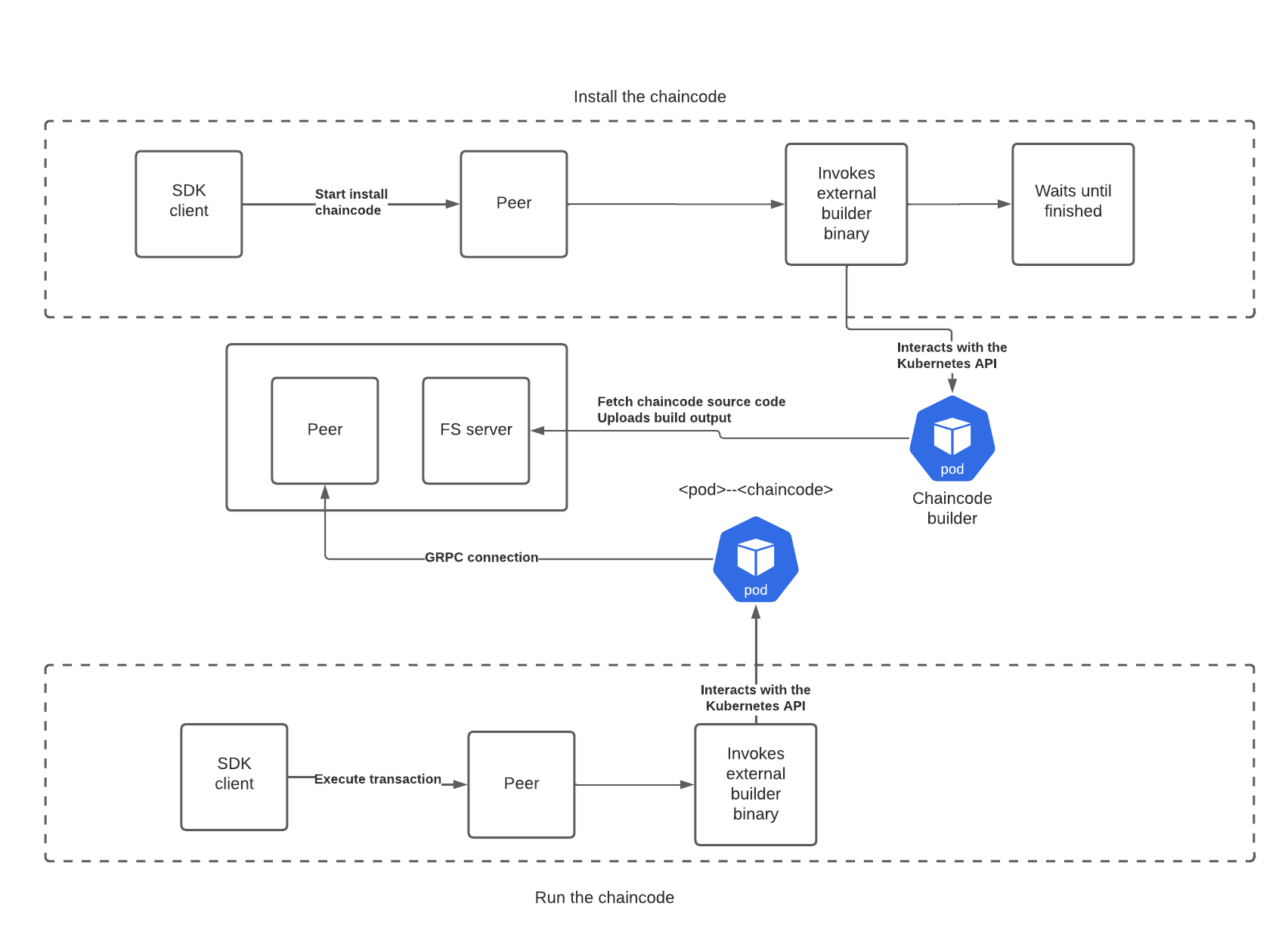Kubernetes chaincode builder
Architecture
In order to build the chaincode, you have to use an image that has a Kubernetes builder bundled with it.
The following picture illustrates how the Kubernetes builder bundled with the previous images works:

Creating peers with external builder
To use the Kubernetes builder, you have to create a peer with the following command:
export PEER_IMAGE=quay.io/kfsoftware/fabric-peer
export PEER_VERSION=2.4.1-v0.0.3
export ORG=org1
export MSP_ORG=Org1MSP
export CA_NAME=ca-org1.default
export PEER_SECRET=peerpw
kubectl hlf peer create --image=$PEER_IMAGE --version=$PEER_VERSION --storage-class=$STORAGE_CLASS --enroll-id=peer --mspid=$MSP_ORG \
--enroll-pw=$PEER_SECRET --capacity=5Gi --name=$ORG-peer1 --ca-name=$CA_NAME --k8s-builder=true
If the peer is already created, you need to change the following properties:
external_chaincode_builder: true
Add the following item to the externalBuilders property in the spec section:
- name: k8s-builder
path: /builders/golang
propagateEnvironment:
- CHAINCODE_SHARED_DIR
- FILE_SERVER_BASE_IP
- KUBERNETES_SERVICE_HOST
- KUBERNETES_SERVICE_PORT
- K8SCC_CFGFILE
- TMPDIR
- LD_LIBRARY_PATH
- LIBPATH
- PATH
- EXTERNAL_BUILDER_HTTP_PROXY
- EXTERNAL_BUILDER_HTTPS_PROXY
- EXTERNAL_BUILDER_NO_PROXY
- EXTERNAL_BUILDER_PEER_URL
And finally, update the image and version to the following:
image: quay.io/kfsoftware/fabric-peer
tag: 2.4.1-v0.0.3
Install chaincode
Install chaincode using the Kubernetes builder:
kubectl hlf chaincode install --path=./fixtures/chaincodes/fabcar/go \
--config=org1.yaml --language=golang --label=fabcar --user=admin --peer=org1-peer0.default
# this can take 3-4 minutes